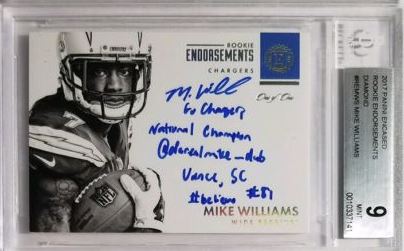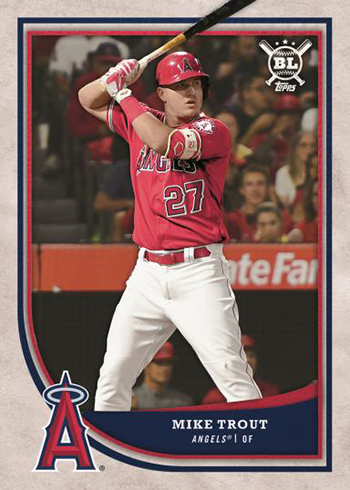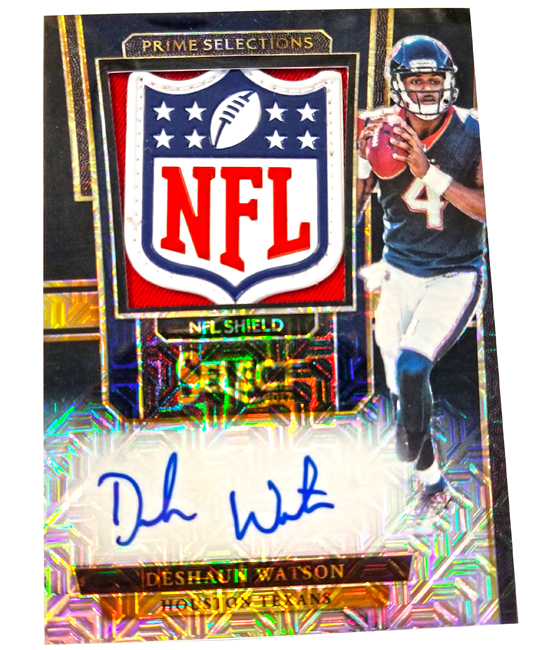I have never been a supporter of graded cards. If you go back through the 10 years of this site, you will see my anger grow with each passing year and each new business tactic the companies use. I have never seen the real reason why people put so much stock in such a subjective process, even more so now with “Black Label” cards commanding such a premium. One could say “the market has spoken,” which is abundantly true. I know my measly site is not going to turn around a tidal wave of people who spend their days pouring over listings looking for the “best” versions of the cards they want. That doesnt mean Im avoiding the discussion either. Hyper mint graded slabs as a premium example of any given card should never be a thing. I want to detail why I see this as a huge problem and not something we should continue to support.
Background
Grading came about for a number of reasons in my opinion, and I always come back to this every time I post about my feelings here. Back when the majority of single card sales shifted from in person to absentee, there was a requirement to understand what you were buying before you bought it. With digital camera technology miles away from where it is now, photos of cards sold via the early days of eBay and the internet were of much lesser quality than they are now. More importantly, without the technology to examine something super closely without actually being there, it became necessary to set up a way to know what to expect without holding the card for sale in your hands. This is important for both reviewing condition and authenticity. It also takes away accountability from shop owners and online sellers whose opinions of card condition was driving sale prices.
Much of that has changed with 1000000 megapixel cameras in use these days, many of which are being carried in our pockets. That’s not saying the service of condition grading isnt helpful, but the way that BGS and PSA continue to market things, a card being mint is no longer enough to achieve the top value available. That’s where my issue lies in part. Its no longer about giving a grade based on easily identifiable standards, its more about baiting collectors into chasing hyper mint grades that seem to be based on microscopic differences in card quality.
Conflicts of Interest
 Im going to cover two problems with grading, both of which should be very important in considering why this business should not be held with the level of certainty that it currently is. The first is the conflict of interest present in the concept of this model, and the second is the subjective nature of the grades themselves in a hyper mint environment.
Im going to cover two problems with grading, both of which should be very important in considering why this business should not be held with the level of certainty that it currently is. The first is the conflict of interest present in the concept of this model, and the second is the subjective nature of the grades themselves in a hyper mint environment.
As mentioned above, BGS and PSA dont do this for free. In fact, it can be quite expensive to grade cards. That means that they are required to attract new and existing business from the pool of market customers. Because there is no regulatory body other than the company’s reputation, and humans complete the process, it can be manipulated to ensure more customers continue to submit their cards for grading.
Lets put it this way. Lets say you have a customer who wants to grade 1000 cards. They have a choice on who they want to use. They likely have a preferred vendor that is preferred because of two things – price and results. Price is standard to a point, and is very easy to change to accommodate big orders. That’s not something that should come as a surprise, nor does it really undermine the whole trust of the process. The second part, results, can be much different.
Because of the subjectivity of the hyper mint grades, there is a conflict of interest present in providing better treatment to individuals who spend the most money. Although you arent going to bump an 8 to a 9.5, bumping a few 9s to 9.5s or 9.5s to 10s is a very good way to ensure repeat business. Again, im not saying this happens all the time, but the conflict of interest is still very present.
All that im saying is that this conflict is a very real challenge to the integrity of the process, and from what graded collectors have told me, has contributed significantly to how they value one company’s grades over another.
Subjectivity Conflicts
This is where the meat of my problem with the business comes from. It literally drives me fucking nuts when a collector pays something like 100x value for a card just because it has a hyper mint grade on it. It drives me insane, because we are literally talking about microscopic differences in most cases, which prevents a true accountability for the results everyone achieves.
Each grade is derived from a human examining the card. Each human employed theoretically has a different viewpoint, even in the interpretation of the outlined rules. Because grades from Gem Mint to Pristine to Black Label dont offer a truly visible difference to the naked eye in most cases, it allows for some wiggle room in how the hyper mint grades are achieved. Although the grading companies stand by their results, and cite their reputation, the subjectivity is enough to create a culture of collectors who take “under graded” cards, crack them out of the cases, and resubmit them. This happens so frequently that you can actually see it happening real time in the slab population reports of results publicly available. Mixing this culture with the practice of creating scarcity through serially numbering cards, you can actually see cards with 10 copies that have been graded as many as 20 times.
Lets take this a step in the other direction as well. Because of the subjective nature of the process, “over graded” cards are rarely justified in their grade. No one is going to take a black label and crack it, just to verify that the grade is legit. Once a card reaches a hyper mint result, the process is almost 100% done. The bible for that card now exists, and there is no reason to question it on the seller side or the buyer side.
Its also very clear that BGS and PSA built their grading business to scale easily. This includes on site reviews at major shows and events, as well as expedited grading times to ensure a quick turn around. What this also means is that no information is likely available past what is published on the slab itself. Its not like a collector who has received a very bad or a very good grade will ever get a report of why the grade is what it is. If my card that I believe should get a 9.5 comes back a 9, I have nothing to reference that explains why my card got the result it did. This sheds more accountability on the behalf of the grading company, and adds more fervor to the refrain that getting a hyper mint grade is as much luck as it is actual condition. Combining this with the conflict of interest that exists, my disgust over collector acceptance becomes very much engaged.
What is Grading Actually Good For?
Honestly, grading does have a few pluses, and they shouldnt go without saying. The first is that authenticity is still very much a worthwhile service that the company provides. Many counterfeits exist, and I actually believe the people who staff the grading companies do have a better handle on the methods than the average collector. Sure experts exist elsewhere, but not in a large enough quantity to avoid this service’s worth.
Similarly, since the beginning of condition based value in collecting, there have been people who have tried to find an edge. This includes trimming edges and corners to ensure a better “condition” and other things like that. Most of the time, this is easily snuffed out by the grading companies, and is a very good thing to have in place.
Lastly, some people like the protection the slabs provide for their cards. As someone who hates the look of most graded cards, I dont subscribe, but others very much do. I have seen people literally put a graded card in boiling water and not see any damage.
What is a better way?
From my point of view, building a scale of 1-10 that has VERY clear markers, no half grades, and focuses on easily identifiable flaws to downgrade a card’s condition is what I am looking for. If a card is an 8 I want to see clearly why it is an 8. If a card is a 10, or Mint, it should be clearly a 10. There is zero reason to go above Mint Condition, as that is how all of these other problems exist. Transparency in the product should be clear or it needs to be regulated by some disinterested third party.
Obviously, this presents a business model that the grading companies wont be able to stomach. It creates an environment where they no longer have as much influence, and no longer set themselves as the main determining body of card condition above and beyond mint.
I want to affirm that im not upset that grading exists, as there are bodies in almost every hobby that do the same thing. Where my anger lies is in the business side of this venture. Making money is going to be more important to the companies than their customers, or even their reputation in some cases. Im not sure how many people actually understand the implications of what that means to the integrity of their cards.
I get it, card collectors are a group built on vanity. We want to have the best collection, the best card, and now the best version of that card anyone can have. The grading companies have played and preyed on that desire, and here we are. Hopefully, people start to wise up and understand that all may not be what it seems.



